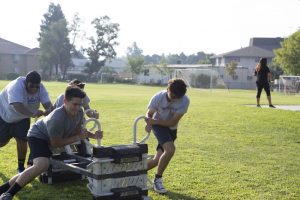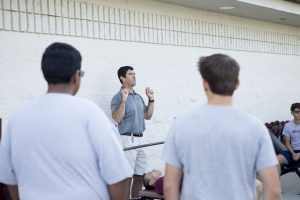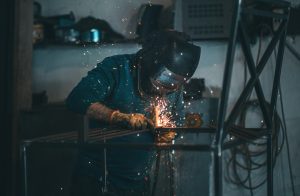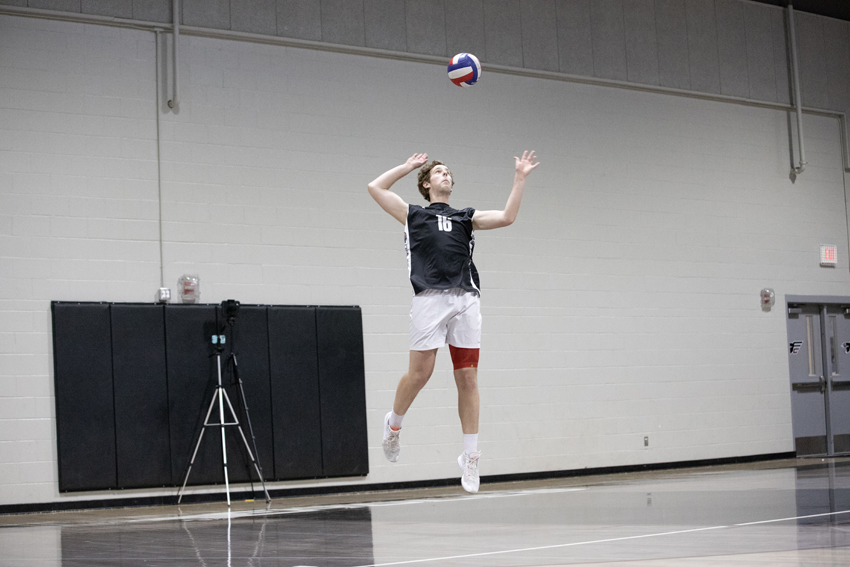This is a blog for students and adults who want to ponder the benefits of exercise, fitness and strength training and their implications for life beyond the momentary endorphin rush or the pursuit of some physical aesthetic ideal. The views and opinions expressed in this blog are founded on several years of personal experience, observation, trial and error (lots of the latter) and study. This is the first of a biweekly series of blogs written by Mick Fuller.
Are you a functional human? To answer that question honestly and accurately, you need to understand how it addresses a central truth of human experience. Every person, at any given moment in life finds himself in one of two categories; he is either functional or dysfunctional. To be functional is to operate well and effectively according to a particular design, plan or set of priorities. A functional tool is useful and effective in the task for which it was designed.

The more robust the tool is, either in strength or complexity (depending on what is needed for the task), the more effectively it can perform its function. A functional hammer drives a nail. A functional sledge hammer drives a wedge or a stake. The hammer is sufficient to drive a nail but is dysfunctional when used to drive a stake; the sledge hammer is the more functional tool for that job. A functional tractor pulls things. The average riding mower functions well for mowing the yard and pulling small loads but not robust enough and therefore dysfunctional if you try to make it pull a grain combine.
A functional person, likewise, accomplishes the tasks he faces in life in a way that brings benefit and value to himself and his community. Different tasks require different abilities and levels of effort. Every person faces many, perhaps hundreds, of distinct tasks each day that he must apply his abilities and effort to.
The more robust he is mentally, physically and emotionally, the more effective he will be in accomplishing all those tasks, creating value in himself, for himself and for his community.
To become functional, a person must practice functioning. He must make himself more robust, more complex, through training. Some training should be specific–learning and practicing skills to apply in the most likely or frequently encountered challenges and tasks.
Other training should produce what are called general adaptations, that is, abilities that can be applied in many different circumstances. Strength training is such a pursuit. It produces a general adaptation, physical strength, which is applicable and beneficial in most situations. The process that produces the strength through training is called the stress, recovery, adaptation cycle.
Let’s analyze how this process works on a hypothetical human, Lewis, who is, in many instances in life, a rather small hammer and not especially functional. He can tie his shoes, play a little indoor soccer in a rec league, and get to work mostly on time, but he isn’t someone anyone really depends on. Lewis begins a training program because he feels weak, inadequate and, in a word, dysfunctional.
Matthew Peterson, ‘20, breaks his squat personal record lifting 365 pounds during strength and conditioning, May 16. @fresnochristian #TheFeather pic.twitter.com/ouXoA9v33Q
— The Feather Online (@thefeather) May 16, 2018
In training, Lewis’s body is subjected to a significant physical stress, such as a heavy set of squats, that disrupts his current steady state (homeostasis). That disruption triggers a cascade of physical and chemical changes in the body to recover from the stress. These changes occur over the course of a few days to make Lewis’s muscles, bones and ligaments a little bit stronger and leading to a new, more robust homeostasis.
Lewis is now adapted to the level of stress that produced it and his body will function well under a similar physical stress. A greater stress will be required to trigger the cycle anew.
Strength training also produces a different type of general adaptation, one equal in both value and applicability to physical strength, that is, mental strength. Examination of the same stress event, the heavy set of squats, will reveal a process that produces a mental adaptation from the difficult challenge.
The squat, if it is heavy enough will be very uncomfortable, even painful. Lewis must choose to complete each repetition with the correct technique until he finishes the whole set. The act of choosing to do the hard, uncomfortable thing is the first step of the process. Lewis may feel a little fearful of the pain or worry about not completing the rep.
When he pushes through and grinds out the first rep, then the second and the third and the fourth and finally the fifth gruelling full depth squat, his fear subsides and his worry proves unfounded. Before he started the set, Lewis didn’t know for certain he could finish. But now he knows he can function in that situation.

He reinforces this new adaptation by doing the second set and then the third, each successful set making him more confident in his ability and more able to endure hardship and discomfort. Lewis’s emotional state improves when knows he can finish something that he starts even when it is difficult and unpleasant.
The more mentally, emotionally and physically robust version of Lewis is now more functional than the pre-training version. Because both his physical strength and mental fortitude are general adaptations, they will naturally assert themselves when he undertakes another challenge, perhaps in sport or when his job requires him to work on a problem for a long time or when a friend asks him for help in moving to a new house.
He is more valuable to himself, to his team, to his employer and to his friend in need. The more Lewis trains, the more he becomes a functional human. Training will not make Lewis perfect, able to function ideally in every imaginable circumstance. There is no way to turn a lawn mower into a 400 horsepower John Deere tractor. But through intense, consistent training, Lewis, and every human, can become better, stronger, more robust, imminently functional versions of themselves.










![[Video] 100th CSPA Spring Journalism Conference](https://thefeather.com/wp-content/uploads/2024/04/20240308-cspa-crown-002.jpg)
![[Video] New York Day 4](https://thefeather.com/wp-content/uploads/2024/04/NY-trip-day-4-JC-.jpg)

![[Video] FCS College Fair](https://thefeather.com/wp-content/uploads/2023/10/20231003-collegefair-012_1.jpg)







Greg Tanaka • Oct 2, 2018 at 1:36 pm
Great article
Mick Fuller • Sep 20, 2018 at 2:11 pm
It should be pointed out that the squat in the squat pr video above is not quite to full depth.
Bryce Foshee • Sep 18, 2018 at 10:59 am
Thank you Coach Fuller for sharing your expertise. Super neat blog!